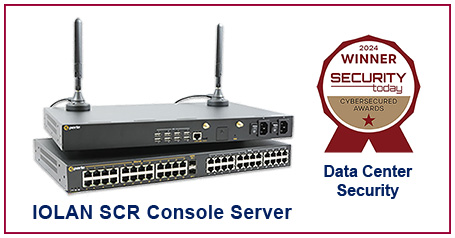
Embracing IoT Applications in the Utilities Sector
By Bastien LeclairDemand Generation Specialist
January 7, 2025
The case for reliable connectivity hardware
The utility sector—comprising energy, water, and gas—can achieve unprecedented efficiency, reliability, and sustainability by embracing IoT (Internet of Things) technology. However, this requires robust connectivity hardware to enable seamless data communication, particularly in environments where legacy systems, modern devices, and harsh conditions coexist. Key hardware components include copper to fiber media converters, cellular routers, and industrial ethernet switches. These devices form a communication backbone that enables real-time monitoring, predictive analytics, and operational optimization.
Copper to Fiber Media Converters: Bridging Legacy Systems
Utility networks often span decades of development, with a significant proportion of infrastructure relying on copper wiring. While fiber optics provide unmatched data transmission speed, scalability, and immunity to electromagnetic interference, replacing all copper systems outright can be cost-prohibitive. Fiber to copper converters bridge the gap between these technologies, translating high-speed optical signals into copper-based electrical signals and vice versa.
For example, in electricity distribution, many substations still use copper-wired connections to communicate with SCADA (Supervisory Control and Data Acquisition) systems. Copper to fiber converters allow these substations to connect to modern, high-speed fiber-optic backbones without complete rewiring.
Similarly, in water management, copper-based sensors attached to pipes and pumps collect real-time data on water temperature, level, flow, etc. By using media converters, these legacy devices can seamlessly transmit this data over fiber-optic cabling to a cloud server for further processing and analysis.
The cost savings benefit is that utilities can modernize their networks incrementally while maintaining full functionality. Moreover, this approach reduces the risk of network downtime during the transition.
Cellular Routers: Enabling Wireless IoT Communication
While wired connections offer stability and speed, utilities often operate in expansive or remote areas where cabling is impractical. This is where LTE and 5G routers shine. With their low latency, high bandwidth, and support for massive machine-to-machine communication, cellular routers serve as the linchpins of wireless IoT networks.
Consider the case of using IoT to enable smart energy monitoring. By deploying cellular routers, utilities can connect thousands of smart meters, remote sensors, and load-balancing devices across urban and rural areas. This enables real-time monitoring of electricity consumption and predictive analysis to prevent grid failures. Similarly, water utilities can use cellular routers to wirelessly link distributed water quality sensors, enabling rapid detection of contaminants and automated responses to maintain safety.
Another significant advantage is mobility. For temporary or mobile installations—such as power restoration units during natural disasters—cellular routers provide reliable connectivity without the need for fixed infrastructure.
Industrial Ethernet Switches: Building a Robust Backbone

While Fiber to copper converters and cellular routers enable device connectivity, industrial Ethernet switches form the backbone of IoT networks. These devices connect multiple network nodes, ensuring that data flows smoothly and securely between sensors, controllers, and central systems.
Unlike standard network switches, industrial ethernet switches are designed to withstand extreme conditions such as high temperatures, humidity, and vibrations—common in utility settings. For example, electricity substations experience electromagnetic interference, while water treatment plants may expose equipment to moisture and corrosive substances. Industrial switches ensure reliable performance in such environments.
A key feature of these switches is their support for redundancy. Using advanced protocols like Rapid Spanning Tree Protocol (RSTP), they can reroute data traffic almost instantaneously in the event of a network failure. This is critical for utilities where downtime can result in severe economic losses and public safety risks.
These switches also support high-speed data transmission, making them essential for bandwidth-intensive applications like video surveillance of power grids or real-time analytics in gas distribution networks.
Real-World IoT Applications in the Utilities Sector
- Smart Electricity Grids: IoT connectivity hardware enables utilities to build smart grids that monitor electricity flows, detect faults, and optimize load distribution. For instance, industrial switches can connect power substations to central control rooms, while LTE and 5G routers provide wireless connectivity for distributed smart meters and outage detection sensors.
- Water Management Systems: Fiber to copper converters integrate legacy water pumps and meters into modern IoT fiber networks, enabling real-time monitoring of water levels, flow rates, and pressure. Simultaneously, cellular routers connect remote quality sensors that detect contaminants or leaks, ensuring rapid response.
- Gas Distribution Networks: Industrial switches help utilities monitor and control gas pipelines, ensuring safety and efficiency. Copper to fiber converters allow older control units to communicate with upgraded central systems, while cellular routers provide wireless connectivity for mobile inspection units.
Aims of a Successful Transition
Embracing IoT in the utilities sector improves operational efficiency, enables predictive maintenance, ensures real-time decision-making, and enhances customer satisfaction. By leveraging reliable connectivity hardware, utilities can achieve:
- Improved Resource Efficiency: IoT devices provide granular data, enabling utilities to identify inefficiencies, reduce energy and water waste, and optimize resource allocation.
- Enhanced Reliability: Real-time monitoring helps detect and resolve issues before they escalate, reducing service disruptions.
- Cost Savings: Incremental modernization using connectivity hardware avoids large-scale infrastructure overhauls.
- Environmental Sustainability: Optimized operations reduce carbon footprints, supporting global sustainability goals.
Outcomes and Benefits
When implemented successfully, IoT technology transforms utilities into smarter, more agile organizations. Real-time data enables better forecasting of demand, optimized resource use, and faster response to emergencies. Moreover, predictive analytics powered by IoT reduces maintenance costs by preventing failures before they occur.
For customers, these changes translate into improved service reliability, transparency, and potentially lower costs. For utility companies, the operational and financial gains provide a competitive edge in an increasingly data-driven world.
By combining fiber to copper converters, cellular routers, and Industrial switches, utilities can navigate the complexities of modernization while ensuring robust, scalable, and future-proof IoT networks.



